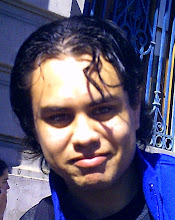ScienceDaily (June 30, 2008)
Researchers at New York University's Center for Developmental Genetics report that the photoreceptors in an insect's eye can change their traditional functions during metamorphosis. The researchers found that when photoreceptors responsible for detecting the color green die off during metamorphosis a second class of photoreceptors--those responsible for detecting the color blue--then fill the role of detecting the color green. These rare switches, the authors speculate, are likely the result of changing life patterns.
The study appears in the most recent issue of the journal Nature. The study's authors, NYU Biology postdoctoral fellow Simon Sprecher and Professor Claude Desplan, examined the eye of the fruit fly Drosophila. Fruit flies can be analyzed and manipulated in exquisite details by biologists and serve as a powerful model system to understand biological processes such as vision.
Fly's life starts as a larva. Larvae possess two very simple eyes, each composed of 12 photoreceptors, eight of which are devoted to detecting the color green, labeled Rh6, and four used to detect blue, labeled Rh5. The Rh6 photoreceptors are also used in the functioning of the fly's biological clock.
When the larva metamorphose to become an adult, the larval eye does not disappear but instead becomes an even simpler visual organ called the eyelet that serves exclusively for entraining the biological clock. This eyelet contains only four Rh6 (green) photoreceptors and no Rh5 (blue) ones. The researchers found that all Rh6 photoreceptors degenerate and disappear during early phases of metamorphosis while the Rh5 photoreceptors remain throughout pupation--the process in which an insect reaches maturation--and eventually take over the function of Rh6 photoreceptors by shedding their original role of detecting the color blue and switching to green.
The researchers also sought to determine the catalyst for the switch. Their findings pointed to the hormone ecdysone, which serves the switching process in two ways: it prompts the death of Rh6 cells and triggers the change in Rh5 photoreceptors from blue-sensitive to green-sensitive.
Sprecher and Desplan note that although examples of such switches are extremely rare, they may be more common than is currently understood. They point to the Pacific pink salmon and rainbow trout, in which newly hatched fish express an ultraviolet receptor that changes to a blue receptor as the fish ages. As in flies, this switch might reflect an adaptation of vision to the changing lifestyle: the maturing salmon, born in shallow water, later migrates deeper in the ocean where ultraviolet does not penetrate, making detection of ultraviolet unnecessary.
The study was funded by the National Eye Institute of the National Institutes of Health.



